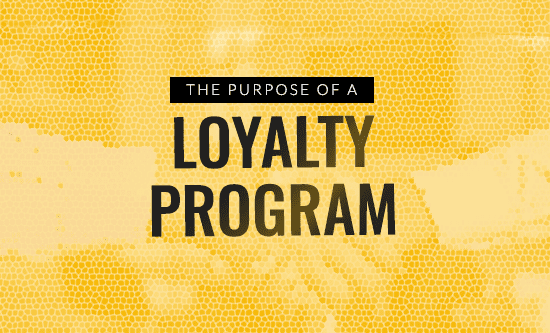Here is my simplistic definition…
“A loyalty program” is a device to de-anonymise customers and provide a value exchange that allows organisations to create a customer-specific communication program aimed at increasing customer value.”
You will notice that my definition doesn’t include points, rewards, status tiers or even recognition. This is intentional. I see many loyalty programs that are set up with earning and redemption mechanisms, and then customers are left to find their own way to earn and burn their “points”…I call these passive programs that create significant cost and likely do very little to drive incremental sales. The key differentiator between a loyalty program that works and one that just exists is the communication program that sits behind it. We have clients with “loyalty” programs that have no earn or burn process at all. They have some member benefits, but the centrepiece of the program is a highly personalised communication process that drives incremental sales.
So here are some things for you to mull over as you think about how much you disagree with my definition of a loyalty program.
1.Do customers who are members of a loyalty program spend more or are higher spending customers more likely to join a program? To answer this question properly, you need to be able to compare a customer’s spend before and after joining. But that’s impossible because before they joined, they were anonymous. So the next best option is to see if the customer’s spend increases over time from the point of joining the program. For example, if a customer spends $100 per month when they join, then look at what their average monthly spend is 6 months after they join. This will give you a more accurate evaluation of whether your program is working.
2.Does it make more sense to stand alone or to be part of a coalition program? If you are Woolworths or Coles, it makes sense to have your own, but not for the reason you are thinking…Supermarkets can have their own program because people typically shop for food once a week or more. That means the communication ratio to visit is low…if you get two emails a week from your supermarket, the communication to visit ratio is probably 1:1 or 1:2. But if you are a retailer with your customers typically visiting your shop once every 3 months and you send 1 communication per week, then your communication to visitation ration is 12:1. That’s probably too high because the higher the communication to visitation ratio, the less relevant your communication is going to be. The theoretical benefit of being part of a broader program is that you can insert your messages into a broader communication program to maintain exposure without directly over-communicating. I’m not convinced that airline programs meet this requirement because their partner communications are very limited and mostly centred around points-based offers which drive incremental revenue to the program…so I think there is a gap in the market.
3.Why do many, even large loyalty programs send out generic blast or loosely segmented communications? …I don’t know! To be fair it’s not easy to set up a program of highly personalised behavioural driven communications. It’s much easier to blast out a generic email. I think many loyalty programs are set up with a view that the reward mechanic does most of the heavy lifting in the program so the communication is an afterthought that never gets much attention. Then, when the program doesn’t live up to expectations, the finance people try to remove as much cost as they can to reduce the financial losses, and voila! Weekly generic emails it is. I have great hope that this will change over time with the advent of personalisation engines that can produce personalised customer communication without a lot of effort…I live in hope.
4.How do I know when it makes sense to have a loyalty or a customer program? At the precise point when you realise that Google and Facebook make more money from your customers than you do! It’s fine to pay Google and Facebook or any other paid media or partners to acquire a customer…it’s not fine to keep paying them to reacquire your own customers because you don’t know who they are
 by Regan Yan, the CEO of Digital Alchemy.
by Regan Yan, the CEO of Digital Alchemy.
Regan is a subject-matter expert in analytical database marketing and customer relationship marketing, as well as an in-demand presenter and keynote speaker at national and international events. He also authors thought leadership pieces on data-driven marketing that can be found on the DA Blog.



